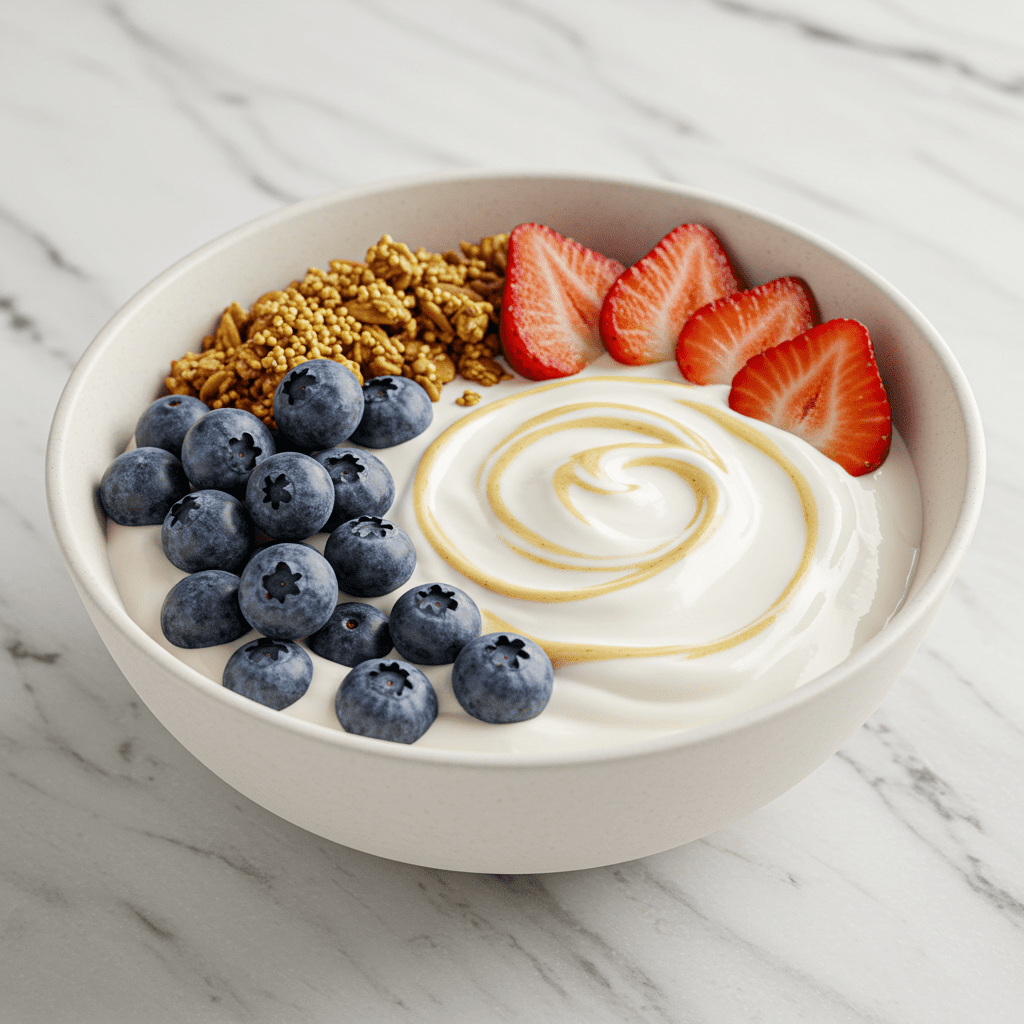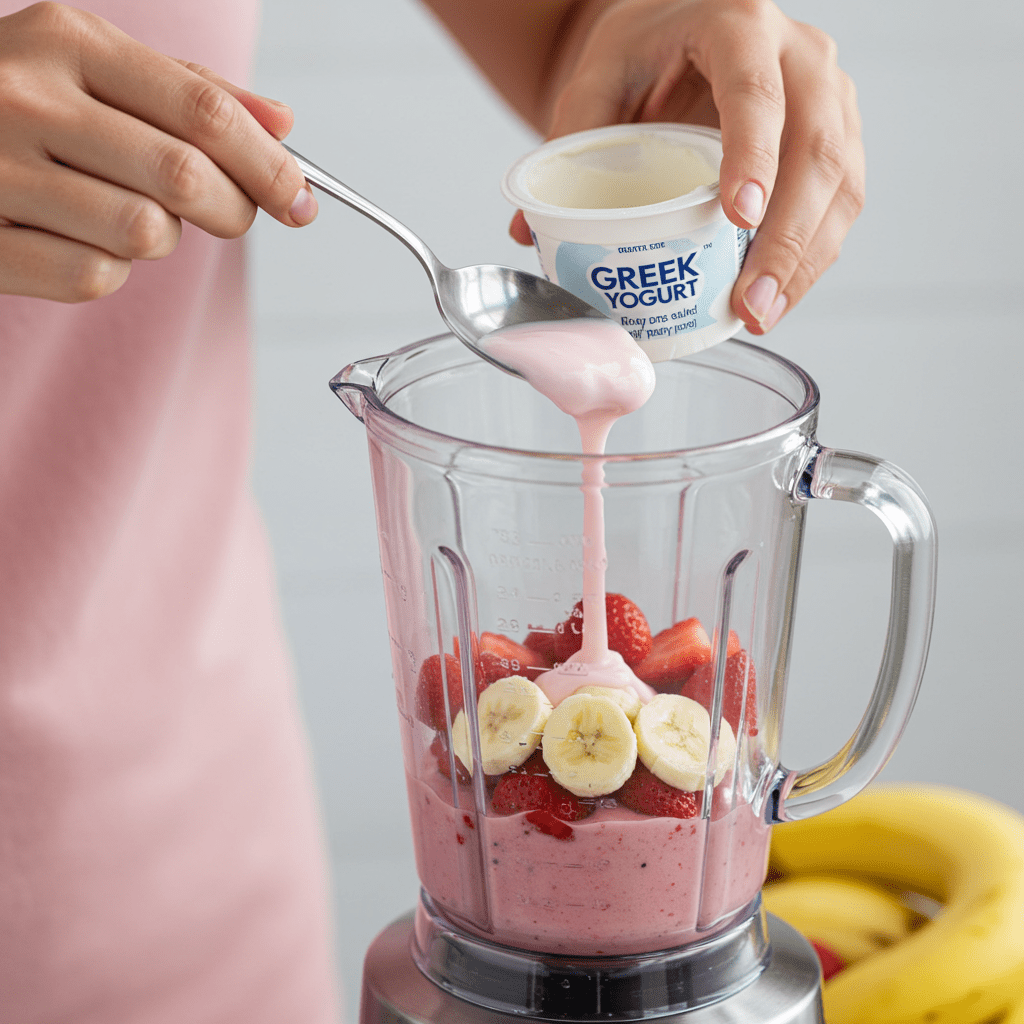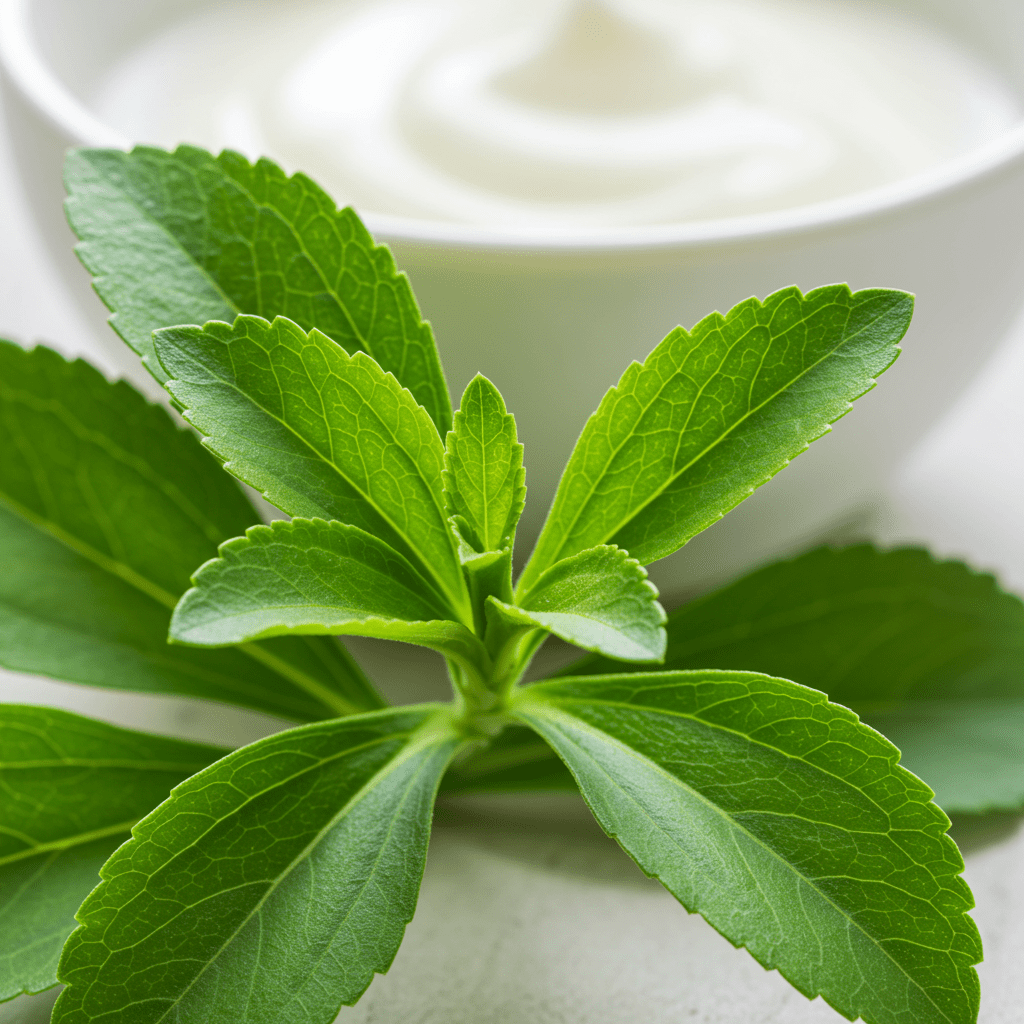Is Oikos Triple Zero Actually a Healthy Choice? A Dietitian Breaks It Down

Picture this: you’re standing in the grocery store’s dairy aisle, faced with a wall of yogurt options. It’s a rainbow of colors, brands, and health claims, and it can feel totally overwhelming. One of the most common questions my clients ask is, “Is Oikos Triple Zero actually healthy?” It’s popular, it’s everywhere, and its name makes some big promises. As a Registered Dietitian, my job is to help you cut through the marketing noise and make food choices that truly support your health and feel good.
So let’s dig into Oikos Triple Zero together. We’ll break down what “Triple Zero” really means, examine its nutritional profile, compare it to other popular yogurts, and explore the real benefits and potential drawbacks.
By the end of this, you’ll be able to decide with confidence if it deserves a spot in your cart.
- What Does “Triple Zero” on the Label Actually Mean?
- A Dietitian’s Look at the Full Nutrition Label
- The Power of 15 Grams of Protein Per Cup
- Let’s Talk About the Sweetener Stevia
- How Does It Compare to Other Yogurts?
- What About the Probiotics for Gut Health?
- Who Is This Yogurt a Great Fit For?
- When Should You Pick a Different Yogurt?
- Smart Ways to Use Oikos Beyond the Cup
- Conclusion
What Does “Triple Zero” on the Label Actually Mean?

The name “Triple Zero” is the brand’s core marketing promise, and it directly refers to three key things you won’t find in the yogurt. Understanding this is the first step to evaluating if it aligns with your health goals.
- Zero Added Sugar: This is perhaps the most significant “zero.” The yogurt contains no added sugars, which are sugars and syrups added to foods during processing. The 7 grams of sugar you see on the label come from lactose, the naturally occurring sugar in milk. The American Heart Association recommends limiting added sugars, as high consumption is linked to health issues. Oikos Triple Zero provides a sweet taste without contributing to your daily added sugar limit.
- Zero Artificial Sweeteners: While the yogurt is sweet, it doesn’t use artificial sweeteners like aspartame or sucralose. Instead, it’s sweetened with stevia leaf extract, a plant-derived, zero-calorie sweetener. The FDA recognizes stevia as “Generally Recognized As Safe” (GRAS), but its unique, sometimes slightly bitter aftertaste isn’t for everyone.
- Zero Fat: This yogurt is made with nonfat milk, meaning it contains 0% milkfat. This helps keep the calorie count low (around 90 calories per cup). While this is great for a low-calorie diet, it’s worth noting that fat contributes to a richer texture and helps your body absorb fat-soluble vitamins like A, D, E, and K.
A Dietitian’s Look at the Full Nutrition Label

Let’s look beyond the “zeros” and analyze the full nutrition panel of a standard 5.3 oz (150g) container of Oikos Triple Zero. As a dietitian, this is where the real story is told.
- Calories: 90. This is a relatively low number for a single-serving snack, making it an easy fit into most calorie-conscious eating plans.
- Protein: 15g. This is the standout macronutrient. Fifteen grams is a significant amount of protein, equivalent to about two and a half eggs. This protein primarily comes from milk and is a blend of whey and casein, which are high-quality, complete proteins that support muscle repair and growth.
- Carbohydrates: 7g. As mentioned, these are naturally occurring milk sugars (lactose), not empty-calorie added sugars. This low carbohydrate content makes it a good option for those monitoring their carb intake, including individuals with diabetes.
- Sodium: 55mg. This is a very low amount of sodium, which is beneficial for maintaining healthy blood pressure.
- Calcium and Vitamin D: Like other dairy products, this yogurt is a good source of calcium, crucial for bone health. Many varieties are also fortified with Vitamin D, which is essential for calcium absorption. The National Institutes of Health emphasizes that the combination of calcium and Vitamin D is critical for building and maintaining strong bones throughout your life.
The Power of 15 Grams of Protein Per Cup

The 15 grams of protein in each cup is a major reason Oikos Triple Zero is so popular, and for good reason. Protein is a powerhouse nutrient that plays a critical role in how you feel throughout the day.
One of its primary benefits is promoting satiety, or the feeling of fullness and satisfaction after eating. Research from publications like the Nutrition Journal has repeatedly shown that higher-protein meals and snacks can help curb hunger and reduce overall calorie intake.
In my practice, I often recommend a high-protein snack like Greek yogurt to clients who struggle with afternoon cravings or feeling hungry shortly after a meal. This can be a game-changer for weight management and preventing mindless snacking.
Furthermore, protein is essential for muscle health. Whether you’re an athlete looking to build muscle, or simply trying to maintain muscle mass as you age, getting adequate protein is key.
Consuming a protein-rich snack like Oikos Triple Zero after a workout can provide your body with the amino acids it needs to repair and rebuild muscle tissue.
Let’s Talk About the Sweetener Stevia

So, if there are no added sugars and no artificial sweeteners, where does the sweet flavor come from? The answer is stevia.
Stevia is a non-nutritive sweetener, meaning it contains no calories or carbohydrates. It’s extracted from the leaves of the Stevia rebaudiana plant, which is native to South America.
The U.S. Food and Drug Administration (FDA) has designated high-purity steviol glycosides (the extracts from the leaf) as Generally Recognized As Safe (GRAS).
This means that based on available scientific evidence, it is considered safe for consumption by the general population. However, the choice to consume stevia often comes down to personal preference.
Some people find it has a slightly bitter or metallic aftertaste, while others don’t notice it at all and enjoy it as a plant-based sugar alternative. If you’ve never liked the taste of stevia in other products, you might not enjoy this yogurt.
But if you’re looking for a way to satisfy your sweet tooth without sugar or artificial additives, it’s an excellent option to try.
How Does It Compare to Other Yogurts?

To truly understand Oikos Triple Zero’s place in the market, it helps to see it side-by-side with other common yogurt choices.
- vs. Plain Greek Yogurt (e.g., Fage 2%): Plain Greek yogurt is the gold standard for a clean slate. It typically has slightly more protein and no added ingredients or sweeteners. However, it’s also tangy and sour. Oikos Triple Zero offers flavor and sweetness for convenience, while plain yogurt gives you full control to add your own fruit or a touch of honey, but requires that extra step.
- vs. Standard Flavored Greek Yogurt (e.g., Chobani Fruit on the Bottom): This is where Oikos really shines. A typical flavored Greek yogurt can have anywhere from 12 to 18 grams of total sugar, with much of that being added sugar. Oikos Triple Zero offers a similar flavored experience with 0 grams of added sugar, making it a clear winner for anyone looking to reduce their sugar intake.
- vs. Traditional Yogurt (e.g., Yoplait Original): Regular, non-strained yogurt is much lower in protein (around 5-6 grams) and significantly higher in sugar. Oikos Triple Zero is far superior in terms of protein content and its sugar profile, making it a more nutritionally dense choice.
- vs. Plant-Based Yogurt (e.g., Silk Almondmilk Yogurt): For those with dairy allergies or who follow a vegan diet, plant-based yogurts are the go-to. However, they are often much lower in protein (typically 3-6 grams) and may contain added sugars to improve taste and texture. Oikos is a better choice for protein, while plant-based options cater to different dietary restrictions.
What About the Probiotics for Gut Health?

Like most yogurts, Oikos Triple Zero contains live and active cultures, also known as probiotics. The specific strains listed in the ingredients are L. bulgaricus & S. thermophilus.
These are beneficial bacteria that can support a healthy gut microbiome. According to the National Institutes of Health, a healthy gut microbiome is crucial for proper digestion, immune function, and even mental health. While probiotics play a key role, other aspects of digestive health are also important, leading many to wonder if fiber gummies work.
While the quantity and diversity of probiotic strains can vary, regularly consuming foods with live cultures can contribute to maintaining a healthy balance of gut bacteria. In early 2024, the FDA even authorized a qualified health claim stating that eating yogurt regularly (at least 2 cups/3 servings per week) may reduce the risk of type 2 diabetes.
While this doesn’t mean yogurt is a magic cure, it highlights the growing body of evidence suggesting that yogurt can be a valuable part of a diet aimed at preventing chronic disease. As a dietitian, I see this as further validation for including yogurt in a balanced eating pattern.
Who Is This Yogurt a Great Fit For?

So, who is the ideal consumer for Oikos Triple Zero? Based on its nutritional profile, I often recommend it to clients with specific goals:
- Athletes and Active Individuals: The high protein content is perfect for post-workout recovery to help repair muscle tissue.
- Anyone on a Weight Management Journey: The combination of high protein for satiety and low calories makes it a powerful tool for feeling full and satisfied while staying within a calorie budget.
- People with Diabetes or Pre-diabetes: With zero added sugar and minimal carbs, it’s an excellent choice that won’t cause a significant spike in blood sugar.
- The Busy Professional: It’s a convenient, pre-portioned, and nutritious snack that you can grab on the go to avoid less healthy convenience foods.
- Those Looking to Reduce Sugar Intake: It’s one of the best-tasting options on the market for satisfying a sweet craving without any added sugar.
When Should You Pick a Different Yogurt?

No single food is perfect for everyone. While Oikos Triple Zero is a great option for many, there are situations where I’d suggest a different yogurt:
- Individuals Needing to Gain Weight or More Calories: If you’re an athlete in a bulking phase or someone with a high metabolism who needs more energy, a full-fat or higher-calorie yogurt would be a more efficient choice.
- Those Who Dislike the Taste of Stevia: The flavor is distinct. If you’ve tried it and don’t like it, you’re better off choosing a plain Greek yogurt and adding your own fruit.
- People Who Prefer Whole Foods with Fewer Additives: While it’s not unhealthy, Oikos Triple Zero does contain natural flavors and stevia. A purist might prefer a simple plain yogurt made with just milk and cultures.
- Anyone with a Dairy Allergy or Lactose Intolerance: As a milk-based product, it’s unsuitable for those with these conditions. A plant-based alternative would be necessary.
- Those Seeking the Benefits of Healthy Fats: Dairy fat from grass-fed cows can be a source of beneficial fatty acids. If you want to include these in your diet, a 2% or whole milk Greek yogurt is a better option.
Smart Ways to Use Oikos Beyond the Cup

Oikos Triple Zero is great on its own, but it’s also incredibly versatile. Moving beyond just a spoon and a cup can help you incorporate its protein benefits into your diet in new and delicious ways.
- Power Up Your Smoothie: Instead of using a watery liquid base, use a container of vanilla or mixed berry Oikos Triple Zero. It adds 15 grams of protein and creates a thick, creamy texture without the need for high-sugar juices.
- Make a Healthier Dip or Spread: Mix a container of plain or vanilla Oikos with a little ranch seasoning powder for a high-protein vegetable dip. Similar to using cottage cheese as the secret to a better tuna salad, you can also use Oikos in place of sour cream on tacos or creamy high-protein mashed potatoes to slash fat and boost protein.
- Create a Quick Parfait: Layer the yogurt with high-fiber cereal or granola and your favorite berries in a glass. This creates a balanced mini-meal that feels like a decadent dessert but is packed with nutrients.
- Use it in No-Bake Recipes: It works wonderfully as a base for no-bake protein bars or as a creamy element in overnight oats, adding flavor and a significant protein punch to start your day.
Conclusion
So, what’s my final verdict on Oikos Triple Zero as a dietitian? It’s a solid, convenient, and healthy choice for many people, especially those focused on increasing protein intake while managing sugar and calories.
It stands out in a crowded market for its commitment to zero added sugars, zero artificial sweeteners, and zero fat, which aligns perfectly with many health-conscious goals. While it’s not the perfect fit for everyone—particularly those who need more calories or dislike the taste of stevia—it serves its purpose exceptionally well.
It’s a fantastic tool for boosting meal satisfaction, supporting muscle health, and enjoying a sweet-tasting snack without derailing your nutrition goals. Ultimately, the best yogurt for you is one that you enjoy and that fits your individual health needs.
For a high-protein, low-sugar option, Oikos Triple Zero is certainly one of the best you can grab from the shelf.

[…] shredded cabbage, pickled red onions, and a drizzle of ranch or a dollop of Greek yogurt. We have a dietitian’s honest take on high-protein yogurts if you’re looking for a healthy […]